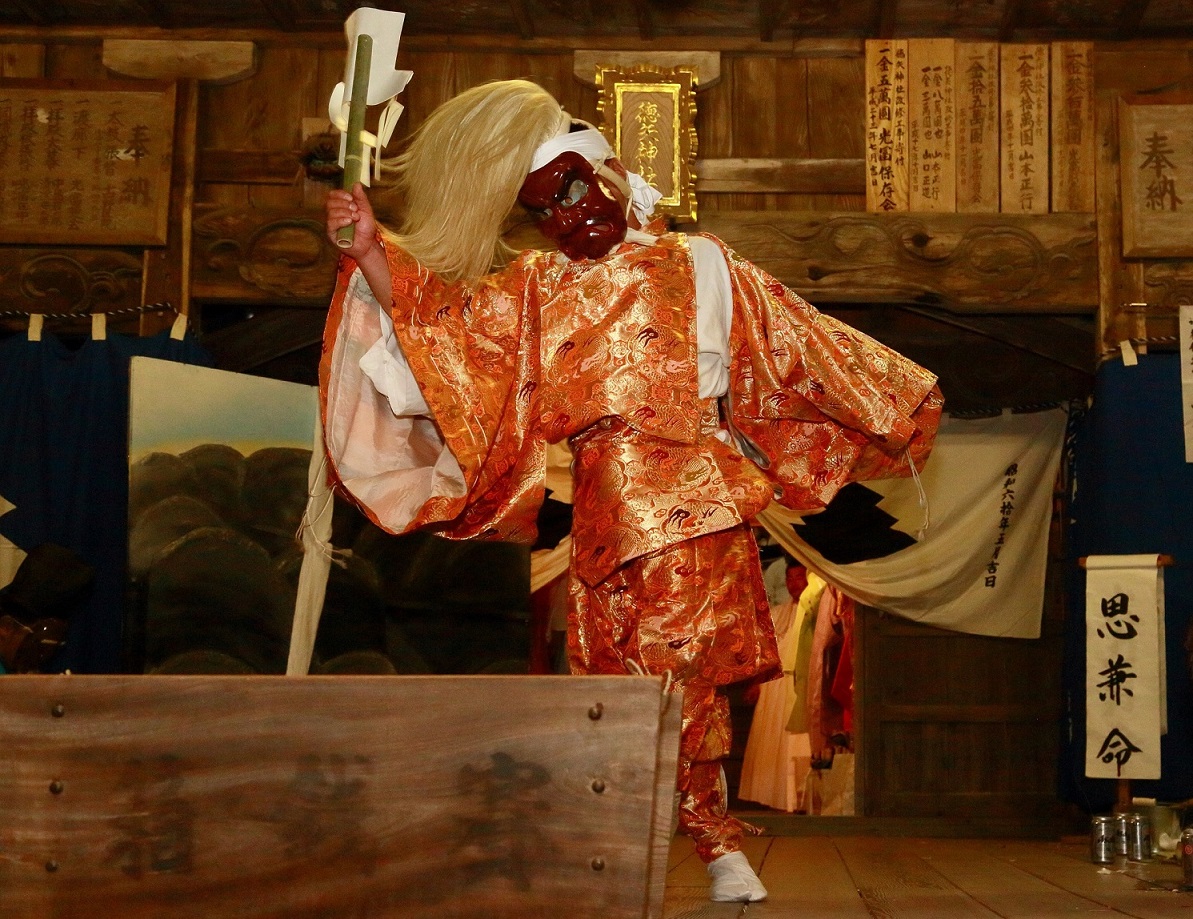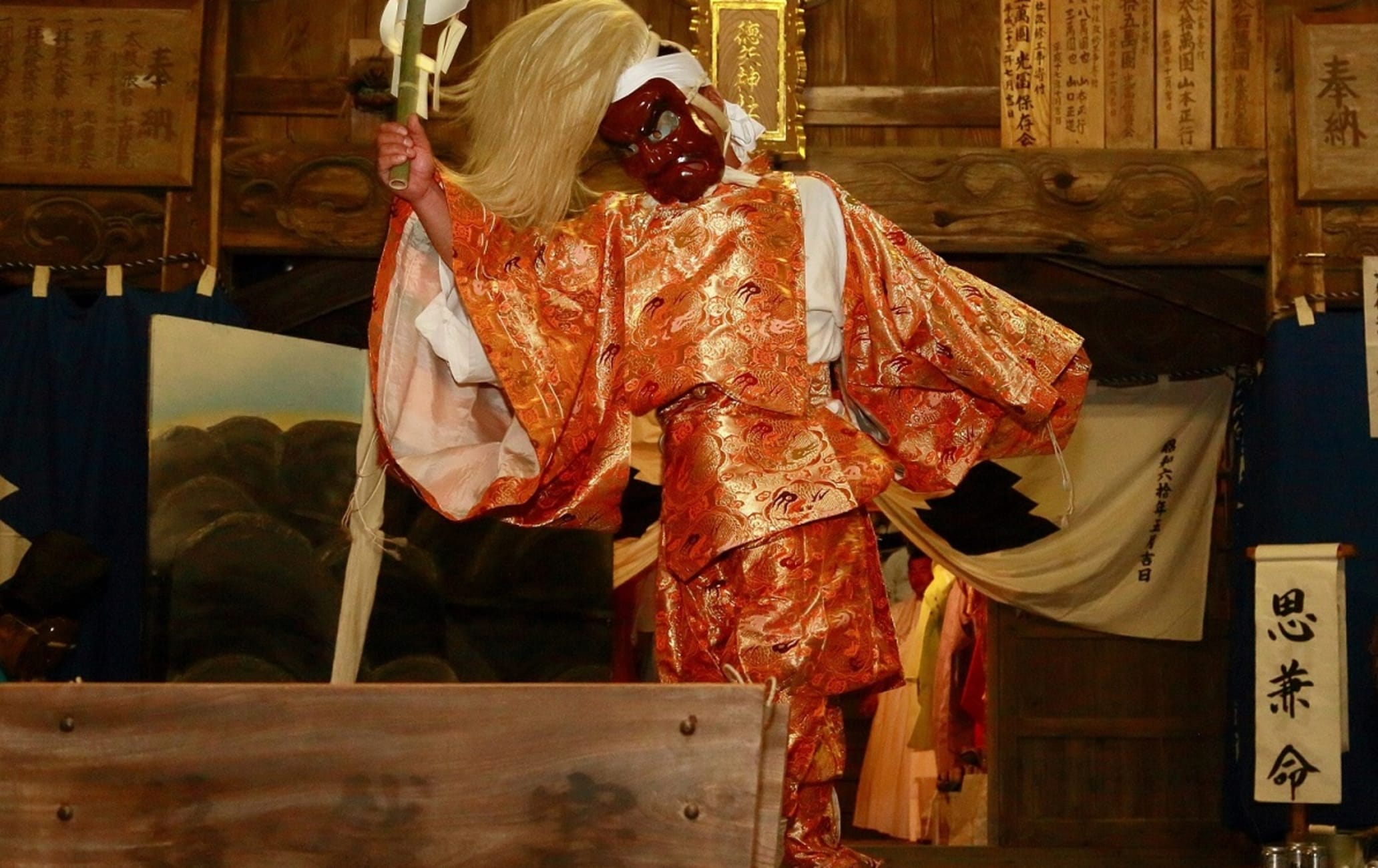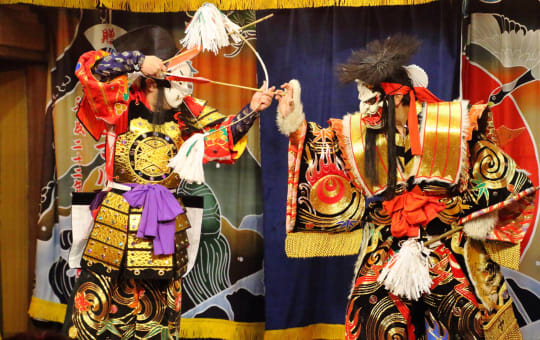The dance of the gods, handed down from ancient times to the present
The town of Miyako, one of the municipalities in the Keichiku district, located one hour south of Kitakyushu, is dedicated to preserving kagura. This ancient form of Shinto music and dance has been passed down for centuries by the people who live and work in the town to offer thanks to the local guardian gods and a good harvest.
Every year from the end of April to the beginning of May, Miyako holds a festival (often called "Shinkosai") accompanied by kagura offerings to pray for the peace of the community and a good harvest. The kagura performed during the festival is unique to the area. It is a joyous occasion for festival-goers to participate in and connect with the ancient traditions of the area.
Don't Miss
- Energetic performances by masked dancers
- Heartfelt music played with traditional Japanese instruments (flute, drums and copper clappers)
- The colorful traditional costumes
How to Get There
The town of Miyako, host of the main festivities, is best accessed by car. From Kitakyushu, the drive should take around 45 minutes.
Kagura Basics
Kagura is a dance based on Japanese mythology, translated as "entertaining the gods." Originally called "kamukura" or "kamikura," kagura dances are thought to have been very simple, similar to miko (shrine maiden) dances or puppet dances. Kagura is performed in many other parts of Japan.
Kagura evolved over time into its present form, becoming grandiose and theatrical under the influence of noh and kabuki. After the Meiji period (1868–1912), local people, rather than priests, began dancing in kagura performances, and it became known as sato-kagura, or "village kagura."
Kagura in Miyako is characterized by its re-enactment of Japanese mythology, especially the story of "Amano-Iwato"—the re-enactment of various stories in the myth to the sounds of traditional Japanese flute music and taiko drums.
The dancers are usually dressed in colorful, archaic costumes and masks, sometimes performing at a high level. In some programs, priests play the roles of mythical gods.


Preservation and transferral of kagura's cultural heritage
Kagura has long been a primary form of entertainment, serving as a ritual for local communities. The people of the Keichiku region, including in Miyako, consider kagura to be a source of pride for their community. They have worked diligently to preserve and pass on their traditions. Thanks to these efforts, the region has become one of the best places in Japan to see and learn about kagura. The people of this region see it as a central part of their heritage and have become the most dedicated practitioners of kagura in Japan.
There are five groups in Miyako and more than 30 groups in the Keichiku area that actively perform kagura. Each has the community's support and carries out its own unique traditions while making efforts to pass them on to the next generation.
In March 2016, the form of kagura handed down in the Buzen area (the old name for the Keichiku region, which includes Miyako) was recognized as an Important Intangible Folk Cultural Property of Japan.
Festivals in Miyako and the Keichiku area dedicated to kagura
From late April to early May each year, kagura is performed at shrines and other venues throughout Miyako. During this time, each kagura troupe in Miyako performs an outdoor ceremony at the town's local Ubusuna Shrine.
Traditional festivals in which kagura is performed as an offering are held only in the town of Miyako. At other times, such as during the Kagura Festival, visitors can see it as an event rather than a Shinto ritual at venues in neighboring Buzen or other locations in Fukuoka Prefecture. The dedication of traditional kagura, passed down from generation to generation, begins from around 7:00 p.m. to 8:00 p.m. on the day of the festival in Miyako, continuing until midnight. In the past, the festival was held until dawn, when the Iwato "rock door" would open to light up the surrounding area, just like the mythological "Amano-Iwato."
Anyone is welcome to watch kagura. If you do watch, please be mindful of the sacredness of this tradition and be respectful of the local community.
























































